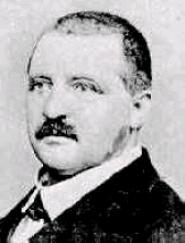Early Adagio and Scherzo
Before completing the symphony in April 1866, Bruckner composed other forms of the Adagio and the Scherzo.
The Adagio was first conceived in classical sonata form, with development, not the ternary structure with elaborate middle section. The exposition and the recapitulation are similar to that of the Linz version. In the beginning of its central section a third Schumanesque motif is introduced, which will be partially re-used as accompaniment of the oboe solo of the middle section of the Linz version. [1] This early version of the Adagio (manuscript Mus.Hs.40400) was partially orchestrated, without trumpets or trombones. The recapitulation of the first motif is played by the strings and decorated by the winds. The recapitulation of the second subject, which was sketched only by the second violins and the woodwinds, breaks off at bar 154. Thereafter, five bars were left unwritten before the – on the contrary – fully orchestrated close of the movement.
The originally conceived Scherzo was not fully orchestrated either, lacking trumpets and trombones, but its Trio was carried over unchanged in 1866. [2] The scherzo of this draft version exhibits many irregular phrase rhythms which Bruckner evened out in later versions. [3] This early Scherzo (manuscript Mus.Hs.6019) is very short and quite distant in character from what Bruckner eventually used in the Linz version. [4] In the leaflet for his recording of the symphony, Tintner writes that "the earlier very short Scherzo, which Bruckner discarded before 1866 (because of its brevity?), with chromatic syncopation, is perhaps more interesting [than the final one]."
A recording of these early (incomplete) Adagio and Scherzo by Osmo Vänskä is available in the Bruckner Archive [5] and Bruckner Society CD BSVD-216. [6]
In 1995 Wolfgang Grandjean edited the earlier Adagio and Scherzo as a study score (I/1a-STP). [2] For performance purposes, Grandjean filled in the missing bars of the Adagio using the corresponding musical material in the 1866 score (Doblinger 74 014). [2]
In his transcription for chamber orchestra, Ricardo Luna completed the five missing bars of the recapitulation of the Adagio by using the corresponding material of the Linz version. Because the music of the preceding seven incomplete bars (with only melodic elements) is not identical to that of the Linz version, he had to make some adjustments to arrange the rhythms where they were not given in the accompanying voices. [7]
An electronic recreation of the early Adagio and Scherzo by Joan Schukking can be heard and downloaded at John Berky's website. [8]





